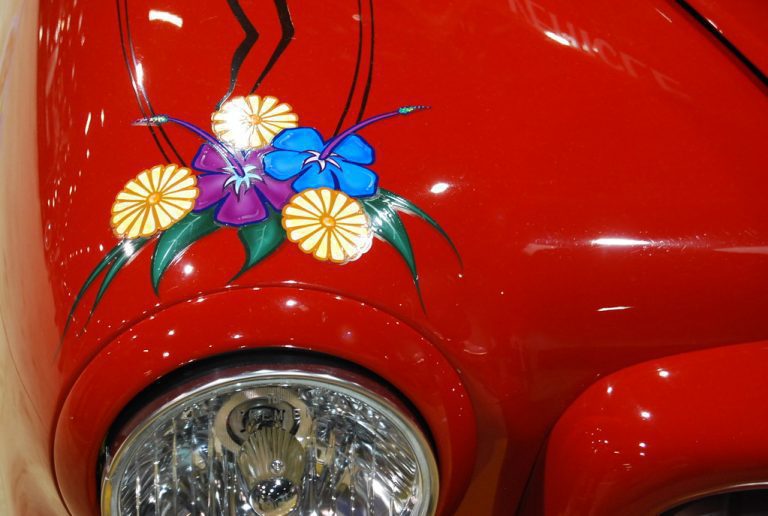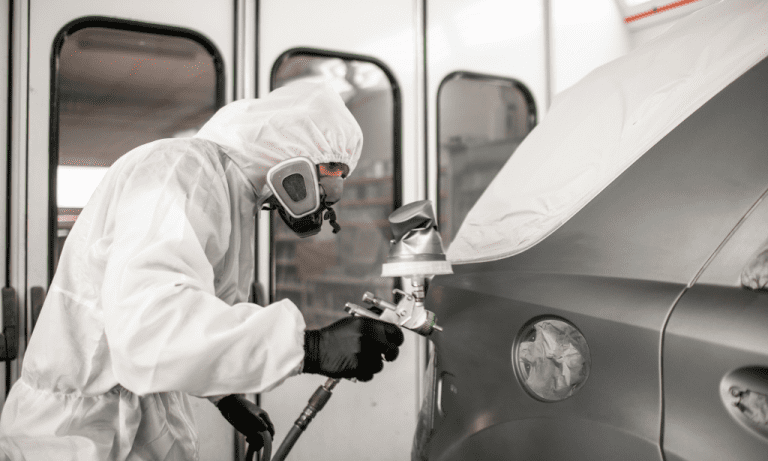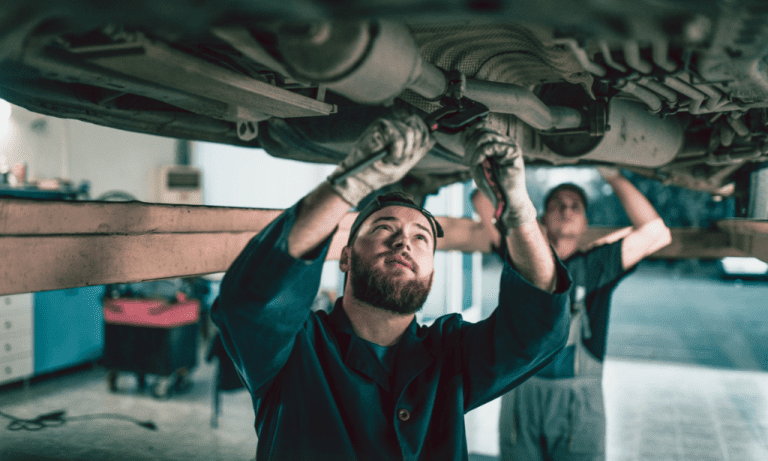Can You Paint Over Epoxy Primer? [Tips 2024]
Yes, you can paint over epoxy primer. Epoxy primer serves as a durable base coat for paint, providing excellent adhesion and corrosion resistance.
Painting over epoxy primer helps to enhance the aesthetic appeal and protect the underlying surface. However, it is important to properly prepare the primer before applying paint to ensure maximum adhesion and longevity. This includes cleaning the surface, sanding any rough areas, and removing any contaminants.
Additionally, choosing a compatible paint that adheres well to epoxy primer is crucial for a successful paint job. Whether you are completing a diy project or seeking professional assistance, painting over epoxy primer is a feasible and effective way to achieve a smooth and lasting finish.
Understanding Epoxy Primer
Epoxy primer is a crucial component in the painting process, serving as a durable and reliable base for your final coat of paint. Understanding what epoxy primer is and its purpose is essential before embarking on any painting project. In this section, we will explain the key points about epoxy primer, including its benefits, characteristics, and how to choose the right one for your specific project.
Explaining What Epoxy Primer Is And Its Purpose In The Painting Process
- Epoxy primer is a type of primer that contains epoxy resin, a highly durable and adhesive substance used in various applications.
- Its main purpose is to provide a strong foundation for subsequent layers of paint or coatings.
- Epoxy primer creates a protective barrier against corrosion, chemicals, and environmental factors.
- It improves paint adhesion and enhances the overall durability and longevity of the painted surface.
Benefits And Characteristics Of Epoxy Primer
- Excellent adhesion: Epoxy primer forms a strong bond with the surface it is applied to, promoting optimal paint adhesion.
- Corrosion resistance: Epoxy primer protects metal surfaces from rust and corrosion, making it an ideal choice for automotive and industrial applications.
- Chemical resistance: It is highly resistant to solvents, oils, and other chemicals, ensuring maximum protection in industrial settings.
- High build properties: Epoxy primer can be applied in thick coats to fill in minor surface imperfections, creating a smoother finish.
- Quick drying: Once applied, epoxy primer dries quickly, allowing for faster completion of the painting process.
Choosing The Right Epoxy Primer For Your Project
- Surface type: Consider the material you are painting (metal, wood, concrete) and choose an epoxy primer specifically formulated for that surface.
- Desired finish: Determine whether you prefer a glossy or matte finish and select an epoxy primer that aligns with your aesthetic goals.
- Compatibility with topcoat: Ensure the epoxy primer you choose is compatible with the type of paint or coating you plan to apply over it.
- Environmental conditions: Take into account factors such as temperature, humidity, and exposure to uv rays when selecting an epoxy primer suitable for your project.
Understanding epoxy primer will help you make informed decisions when it comes to selecting the right product for your painting project. By considering its benefits, characteristics, and compatibility with your specific requirements, you can achieve a professional-grade finish with enhanced durability.
Preparing The Surface
Whether you’re a diy enthusiast or a professional painter, one question that may come to mind when using epoxy primer is can you paint over it? The answer is yes, you can paint over epoxy primer, but proper surface preparation is crucial to ensure a successful paint job.
In this section, we will focus on the importance of preparing the surface before painting over epoxy primer. Let’s dive in!
Importance Of Proper Surface Preparation Before Painting Over Epoxy Primer
Before applying a fresh coat of paint over epoxy primer, it’s essential to prepare the surface properly. Here are the key points to keep in mind:
- Cleaning the surface and removing any contaminants: Before painting, it’s crucial to clean the surface thoroughly to remove dirt, dust, oil, grease, and any other contaminants that may hinder proper adhesion. Use a suitable cleaning solution and ensure the surface is completely dry before moving forward.
- Sanding and smoothing the surface: To ensure proper adhesion between the epoxy primer and the paint, it’s important to sand and smooth the surface. This step helps remove any imperfections, such as rough spots, unevenness, or previous coatings that may affect the overall finish. Sand the surface gently using medium-grit sandpaper, and make sure to wipe away any dust before proceeding.
By following these essential surface preparation steps, you’ll create an optimal foundation for painting over epoxy primer. Remember to be thorough in your cleaning and sanding efforts to achieve the best results.
Selecting The Right Paint
Can You Paint Over Epoxy Primer
When it comes to painting over epoxy primer, there are certain factors to consider in order to achieve the best results. The paint you choose should be compatible with epoxy primer and provide a flawless finish. Here are some key points to keep in mind when selecting the right paint for your project:
Factors to consider when choosing paint to go over epoxy primer:
- Adhesion: The paint should have good adhesion properties to ensure it bonds well with the epoxy primer.
- Compatibility: Ensure that the paint is specifically designed to be used over epoxy primer. This will prevent any issues with the paint not adhering properly or peeling over time.
- Drying time: Consider the drying time of the paint as it should be compatible with the epoxy primer. It is important to allow the primer to completely cure before applying the paint.
- Uv protection: If the painted surface is going to be exposed to sunlight, choose a paint that offers uv protection to prevent fading and discoloration.
Compatible paint types that work well with epoxy primer:
- Acrylic paint: Acrylic paint is a versatile option that works well over epoxy primer. It provides a durable and long-lasting finish.
- Enamel paint: Enamel paint is another suitable option that adheres well to epoxy primer. It offers a glossy finish and is resistant to stains and scratches.
- Latex paint: Latex paint is a popular choice for painting over epoxy primer. It is easy to apply, dries quickly, and offers good adhesion.
Optimal paint finishes for a flawless result:
- Gloss finish: A glossy finish is a great choice if you want a smooth and shiny surface. It is easy to clean and offers good durability.
- Satin finish: A satin finish provides a slight sheen that is less reflective than a glossy finish. It offers a more subtle and elegant look.
- Matte finish: If you prefer a non-reflective and low-sheen surface, a matte finish is the way to go. It is great for hiding imperfections and gives a modern and sophisticated touch.
Remember to always follow the manufacturer’s instructions when applying paint over epoxy primer. With the right paint selection and proper application, you can achieve a flawless result that enhances the durability and appearance of your project. So, get ready to transform your surfaces with a stunning coat of paint over epoxy primer.
Applying Paint Over Epoxy Primer
Proper Techniques For Applying Paint Over Epoxy Primer
When it comes to applying paint over epoxy primer, it’s important to follow the proper techniques to ensure a successful and long-lasting finish. Here are some key points to keep in mind:
- Clean the surface thoroughly: Before applying paint, make sure the surface is clean and free of any dust, dirt, or debris. Use a degreaser or detergent to remove any grease or oil from the surface.
- Sand the epoxy primer: Lightly sand the epoxy primer using fine-grit sandpaper to create a rough surface that the paint can adhere to. This will help the paint bond with the primer for better durability.
- Use the right type of paint: Choose a paint that is compatible with epoxy primer. Check the paint label or consult with a professional to ensure you are using the appropriate paint for your specific project.
- Apply the paint in thin coats: Start by applying a thin coat of paint, allowing it to dry completely before applying subsequent coats. This will help prevent drips and runs, ensuring a smooth and even finish.
- Use a paint sprayer or brush: Depending on the size and nature of your project, you can choose to apply the paint using a paint sprayer or a brush. Both methods have their own advantages, so choose the one that suits your needs best.
Tips For Achieving An Even And Smooth Finish
To achieve an even and smooth finish when painting over epoxy primer, consider the following tips:
- Work in a well-ventilated area: Adequate ventilation is essential when working with paint and other chemicals. Ensure that the area is well-ventilated to prevent any health risks and to allow the paint to dry properly.
- Apply light coats: Instead of trying to cover the surface in a single heavy coat, apply several light coats of paint. This will help prevent problems like runs, drips, and uneven coverage.
- Maintain a consistent technique: Whether you are using a paint sprayer or a brush, maintain a consistent technique throughout the painting process. This will help ensure an even application and a smooth finish.
- Allow proper drying time: Be patient and allow each coat of paint to dry completely before applying additional coats. Rushing the process can lead to uneven drying and a compromised finish.
Recommended Tools And Equipment For The Job
Having the right tools and equipment can make a significant difference when applying paint over epoxy primer. Consider using the following:
- High-quality paint brushes or paint sprayer: Invest in good quality brushes or a paint sprayer to ensure smooth and even application of paint.
- Fine-grit sandpaper: Use fine-grit sandpaper to lightly sand the epoxy primer and create a suitable surface for paint adhesion.
- Cleaning supplies: Have degreasers, detergents, and other cleaning supplies on hand to properly clean the surface before painting.
- Protective gear: Wear protective gear such as gloves, safety glasses, and a respirator to protect yourself from potentially harmful chemicals and fumes.
- Drop cloths and masking tape: Prepare the work area by covering surrounding surfaces and masking off areas that should not be painted.
Remember, by following proper techniques and using the right tools and equipment, you can achieve a professional-looking finish when applying paint over epoxy primer.
Common Issues And How To Address Them
Painting over epoxy primer can sometimes present certain challenges that need to be addressed for a successful and flawless finish. Understanding the potential issues that may arise and the solutions to overcome them is crucial to achieving a professional-looking paint job.
In this section, we will explore some common problems that can occur when painting over epoxy primer, as well as provide practical tips to troubleshoot and resolve these issues. Let’s dive in and discover how to ensure a seamless and long-lasting paint application.
Potential Problems That May Arise When Painting Over Epoxy Primer:
- Poor paint adhesion: A common issue when painting over epoxy primer is poor adhesion of the paint to the surface. This can result in peeling, flaking, or paint that easily scratches off.
- Bubbling or blistering: Another concern is the formation of bubbles or blisters in the paint after it has been applied. This can be unsightly and may require additional sanding or a complete repaint if not addressed properly.
- Peeling or chipping: In some cases, the painted surface may start to peel or chip away, compromising the overall finish and durability of the paint job.
Solutions For Issues Such As Paint Adhesion, Bubbling, Or Peeling
- Proper surface preparation: Ensuring the surface is clean, dry, and free from contaminants before applying the epoxy primer is essential to promote better paint adhesion. Use a degreaser or solvent to remove any dirt, oils, or old paint.
- Using the right type of paint: Not all paints are suitable for use over epoxy primer. Check the paint label or consult with a professional to ensure compatibility. Using a high-quality paint specifically designed for epoxy surfaces can help prevent adhesion issues.
- Applying thin and even coats: Applying multiple thin coats of paint, rather than one thick coat, can minimize the risk of bubbling or blistering. Follow the manufacturer’s instructions for proper drying times between coats.
- Proper curing time: Epoxy primers require sufficient curing time before painting. Ensure the primer has fully cured according to the manufacturer’s recommendations before applying paint.
- Sanding and scuffing: Lightly sanding the epoxy primer with fine-grit sandpaper can improve paint adhesion. Additionally, scuffing the surface with a scotch-brite pad can create a better surface for paint to adhere to.
Troubleshooting Tips For A Flawless Finish
- Repairing paint defects: If paint defects such as peeling or bubbling occur, it’s important to address them promptly. Sand down the affected area, prime it, and repaint to achieve a seamless finish.
- Proper ventilation: Ensure adequate ventilation during the painting process to prevent issues like bubbling or blistering due to trapped air or moisture.
- Temperature and humidity control: Maintain the recommended temperature and humidity levels during painting and drying to avoid adverse effects on the paint’s performance and finish.
- Regular maintenance: Keep the painted surface clean and perform regular inspections for any signs of damage or wear. Promptly address any issues that arise to prevent them from worsening.
By understanding and addressing these potential issues when painting over epoxy primer, you can achieve a smooth and long-lasting finish that will enhance the aesthetic appeal and durability of your painted surfaces.
Maintaining And Caring For Painted Surfaces
Best Practices To Ensure The Longevity Of The Painted Surface
- Protect the surface from extreme temperature changes, as they can cause the paint to crack or peel.
- Regularly inspect the painted surface for any signs of wear or damage.
- Keep the surface clean and free from dirt, dust, and other debris.
- Avoid using harsh chemicals or abrasive cleaners that can strip off the paint.
- Use a high-quality paint that is specifically formulated for the type of surface to ensure better adherence and durability.
Tips For Cleaning And Maintaining Painted Surfaces
- Use a gentle cleanser or mild soap mixed with water to clean the painted surface.
- Gently scrub the surface using a soft brush or sponge in circular motions.
- Rinse the surface thoroughly with clean water to remove any residue.
- Dry the surface with a soft cloth or allow it to air dry.
- Avoid excessive scrubbing or using abrasive materials that can damage the paint.
Recommended Touch-Up Procedures For Any Future Damage
- Start by cleaning the damaged area and removing any loose paint or debris.
- Sand the damaged area lightly to create a smooth surface for the touch-up paint.
- Apply a small amount of primer to the damaged area and let it dry completely.
- Use a brush or roller to carefully apply the touch-up paint, blending it with the surrounding area.
- Allow the touch-up paint to dry fully before applying any additional coats if necessary.
By following these best practices for maintaining and caring for painted surfaces, you can ensure the longevity and beauty of your paint job. Regular inspections and proper cleaning techniques will help keep your surfaces looking fresh and vibrant. And in the event of any future damage, proper touch-up procedures can help restore the appearance of the painted surface.
Remember to choose high-quality products and take the time to properly prepare and apply any paint or touch-up coatings.
Frequently Asked Questions
Can Epoxy Primer Be Painted Over?
Yes, epoxy primer can be painted over. It provides a durable base coat that improves adhesion and enhances the longevity of the topcoat. Just make sure to properly clean and prepare the epoxy primer surface before applying the paint for the best results.
Does Epoxy Primer Need To Be Sanded Before Painting?
Yes, sanding epoxy primer is important before painting. It helps create a rough surface for better adhesion of the topcoat. Use fine-grit sandpaper or a sanding pad to gently scuff the surface and remove any imperfections or high spots. Remember to clean the surface thoroughly afterward to remove any sanding dust.
What Is The Best Paint To Use Over Epoxy Primer?
When choosing a paint to use over epoxy primer, it is recommended to select a compatible topcoat such as an enamel or urethane-based paint. These types of paints are well-suited for adhesion to the epoxy primer and offer excellent durability and protection for the surface.
Can I Directly Apply Paint Over Epoxy Primer Without Sanding?
While it is possible to apply paint over epoxy primer without sanding, it is generally not recommended. Sanding helps to create a rough surface that improves paint adhesion and ensures better results. It is best to follow the proper steps of sanding and preparing the epoxy primer before painting for optimal performance.
How Long Should Epoxy Primer Dry Before Painting?
The drying time for epoxy primer can vary based on the product and conditions. Generally, it is recommended to wait for the primer to fully cure before applying paint, which can take anywhere from 24 to 48 hours. Follow the manufacturer’s instructions for the specific drying time of the epoxy primer you are using.
Conclusion
To sum up, painting over epoxy primer is possible, but it requires proper preparation and technique. Epoxy primers provide excellent adhesion and corrosion protection, making them suitable as a base for various topcoats. Before applying paint on top of epoxy primer, ensure that the surface is clean and free from any contaminants.
A light sanding can improve the adhesion of the paint. Remember to choose a paint that is compatible with epoxy primer to ensure a long-lasting and durable finish. By following the proper steps, you can achieve a smooth and professional-looking paint job.
Whether it’s for a vehicle, industrial equipment, or even a diy project, understanding how to paint over epoxy primer can help you achieve the desired results. So go ahead and give it a try, and enjoy your beautifully painted surface.
- How To Expertly Attach Patches To Headliner: Master the Process - October 3, 2023
- Can You Safely Clear Coat Your Polished Aluminum for Ultimate Shine? - October 3, 2023
- Will A Raptor Grill Fit An F150? Unveiling the Perfect Customization Option - October 3, 2023





